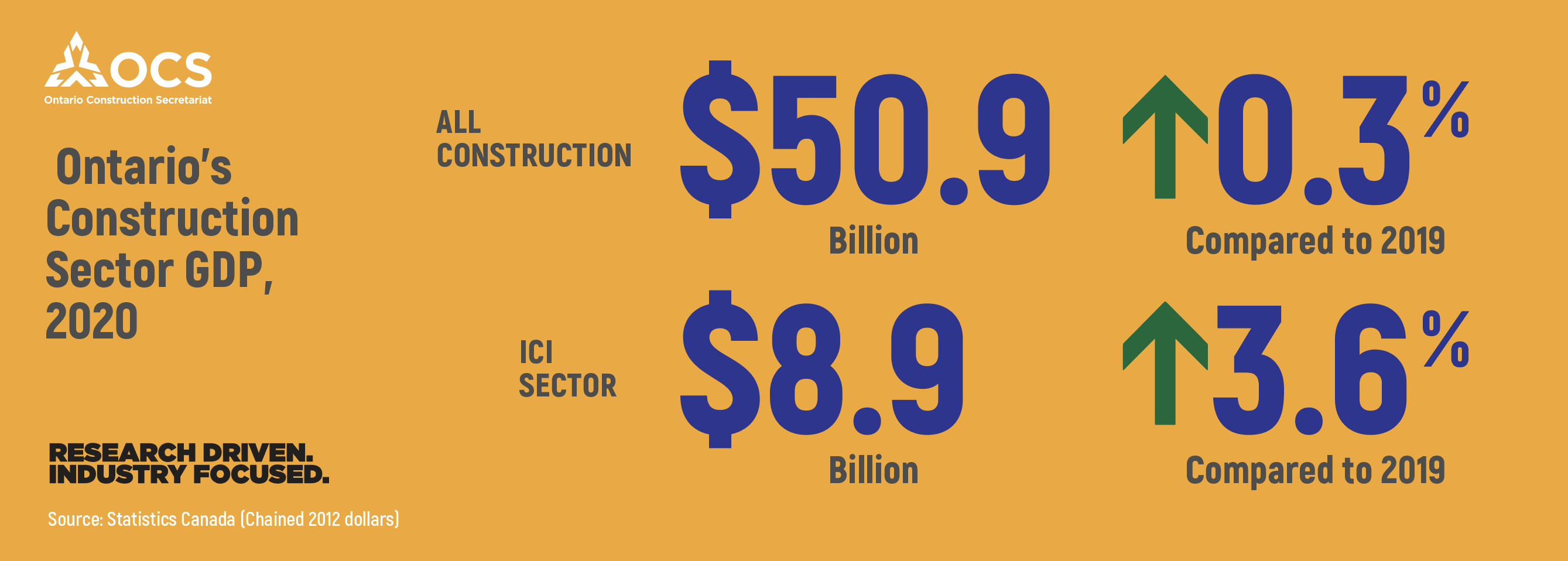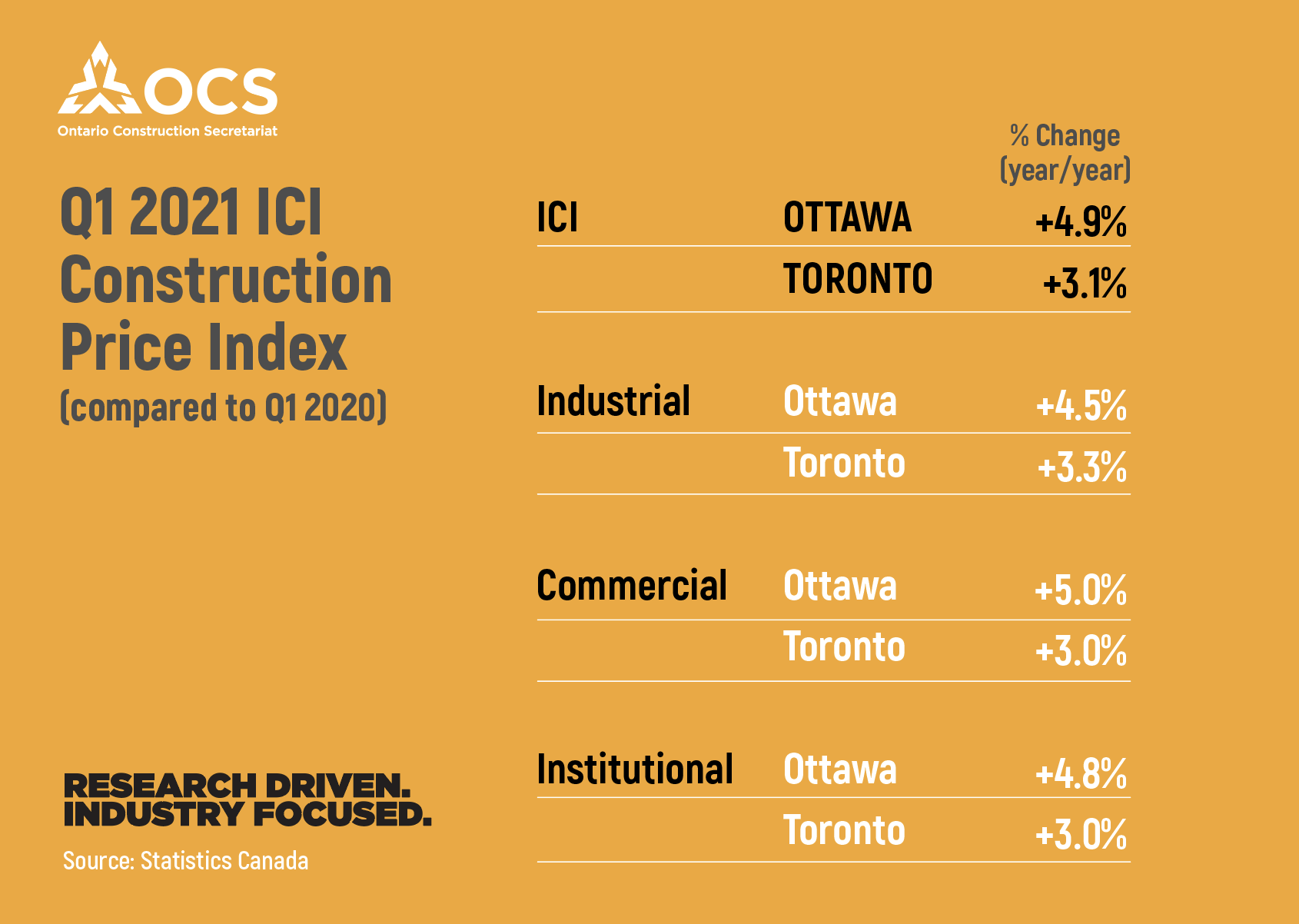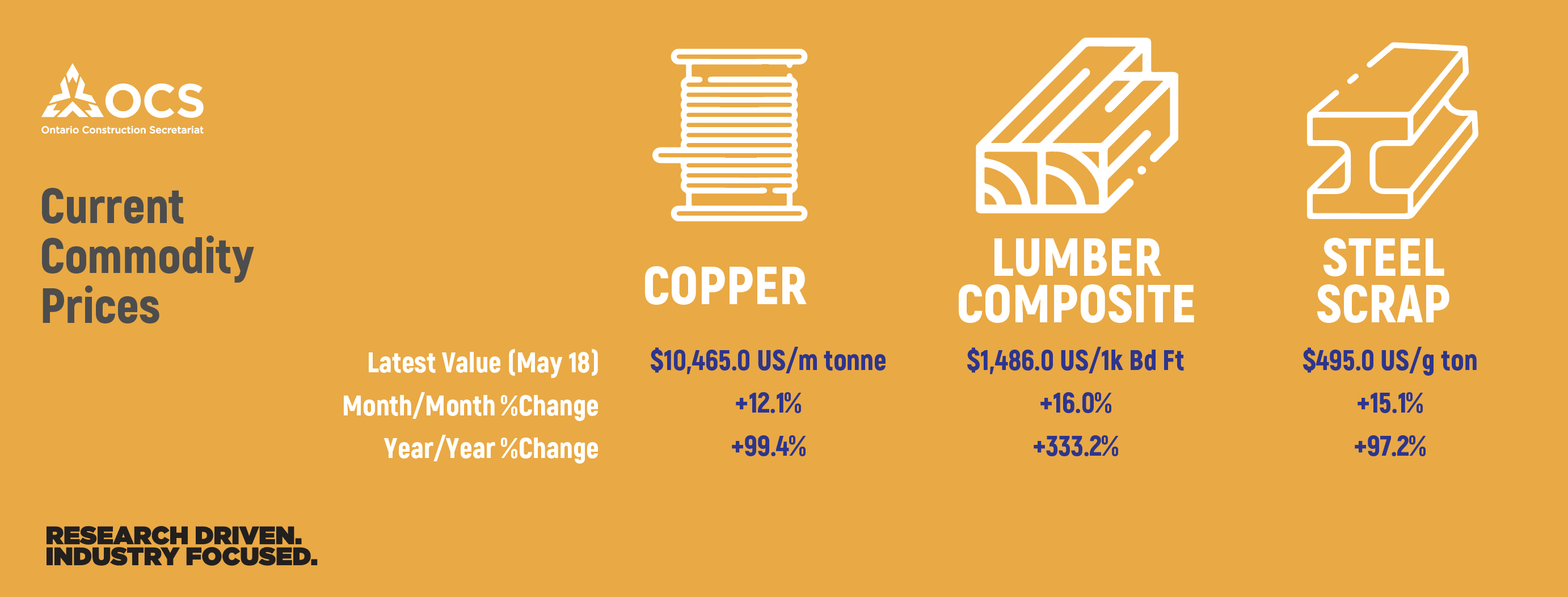

 Ontario’s overall GDP fell by 5.0 per cent in 2020 compared to 2019, the largest decline in the province since records began in 1981, according to Statistics Canada.
Ontario’s overall GDP fell by 5.0 per cent in 2020 compared to 2019, the largest decline in the province since records began in 1981, according to Statistics Canada.
The province’s GDP decline was shared by both broad industry categories in 2020 with goods producing industries down 5.7 per cent and service producing industries down 4.8 per cent compared to 2019.
Industries with 2020 GDP falls worth noting are: manufacturing (-10.8 per cent), wholesale trade (-2.0 per cent), retail trade (-3.4 per cent), public sector (-4.8 per cent), mining, quarrying, and oil and gas extraction (-9.6 per cent), and accommodation and food services (-35.8 per cent).
The construction industry was one of the few in Ontario that saw growth in 2020, says Statistics Canada. Other noteworthy industries that grew in 2020 were: finance and insurance (+5.0 per cent), real estate and rental and leasing (+1.6 per cent), and agriculture and forestry (+10.8 per cent).
Ontario’s construction industry grew by 0.3 per cent compared to 2019, amounting to $50.9 billion or 7.2 per cent of the province’s GDP in 2020. This is a greater share of Ontario’s GDP than in 2019, when the construction industry’s GDP-share was 6.8 per cent.
The GDP of Ontario’s ICI construction sector increased by 3.6 per cent in 2020, up to $8.9 billion or 1.3 per cent of the province’s GDP. The residential sector’s GDP grew by 4.4 per cent in 2020, while the GDP of repair construction fell by 1.6 per cent, and the GDP of engineering and other construction activities fell by 9.1 per cent compared to 2019.
Statistics Canada’s building construction price index data for Q1 revealed a 4.9 increase in Ottawa’s ICI construction prices in the first quarter of 2021 over Q1 2020. This is the biggest increase among the eleven metro areas in Canada included in the index. Toronto’s prices increased by 3.0 per cent compared to last year’s first quarter. Ottawa also saw greater year-over-year price increases at the sector level relative to Toronto. Commercial building construction prices in Ottawa increased by 5.0 per cent compared to Q1 2020, while institutional prices increased by 4.8 per cent and industrial prices increased by 4.5 per cent. Toronto’s industrial building construction prices were up by 3.3 per cent in the first quarter over Q1 2020, while commercial and institutional prices were both up by 3.0 per cent.
In Ottawa, residential construction prices were up by 14.6 per cent in Q1 2021 over Q1 2020, while Toronto saw an increase of 15.0 per cent. Statistics Canada reports that the higher construction prices are mostly due to shortages in construction materials including softwood lumber, veneer and plywood. Export Development Canada’s most recent data shows that material prices have increased substantially both month-over-month and year-over-year. As of the latest date (May 18), copper prices are up 12.1 per cent over last month, and double what they were this time last year (+99.4 per cent). Steel Scrap prices are up by 15.1 per cent compared to last month, and have also nearly doubled over last year (+97.2 per cent). Lumber Composite has more than quadrupled over last year (+333.2 per cent), and increased by 16.0 per cent over last month.
Export Development Canada’s most recent data shows that material prices have increased substantially both month-over-month and year-over-year. As of the latest date (May 18), copper prices are up 12.1 per cent over last month, and double what they were this time last year (+99.4 per cent). Steel Scrap prices are up by 15.1 per cent compared to last month, and have also nearly doubled over last year (+97.2 per cent). Lumber Composite has more than quadrupled over last year (+333.2 per cent), and increased by 16.0 per cent over last month.